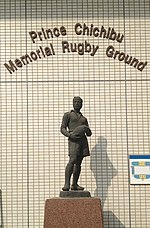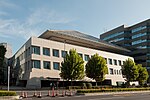Aoyama, Tokyo

Aoyama (青山) is one of the wealthiest neighborhoods of Tokyo, located in the northwest portion of Minato Ward. The area is well known for its international fashion houses, cafes and restaurants. Kita-Aoyama (北青山) or "North Aoyama" refers to the area on the north side of Aoyama-dori (Aoyama Street) between the Akasaka Palace and Aoyama Gakuin University, while Minami-Aoyama (南青山) or "South Aoyama" refers to the area to the south of Aoyama-dori and extends to the northern edge of Roppongi, Azabu and Hiroo. During the Edo period, Aoyama was home to various temples, shrines, and samurai residences. The name Aoyama derived from a samurai named Aoyama Tadanari who served the Tokugawa Shogunate and held his mansion in the area. Today, along with Shibuya and Harajuku, it is one of the most popular entertainment and shopping areas "Omotesandō", for young people in Tokyo. It is well known for its fashion houses, restaurants, and shopping. Chichibunomiya Rugby Stadium is in the North part of Aoyama.
Excerpt from the Wikipedia article Aoyama, Tokyo (License: CC BY-SA 3.0, Authors, Images).Aoyama, Tokyo
Minato
Geographical coordinates (GPS) Address Nearby Places Show on map
Geographical coordinates (GPS)
| Latitude | Longitude |
|---|---|
| N 35.672 ° | E 139.723 ° |
Address
107-8503 Minato
Japan
Open on Google Maps










